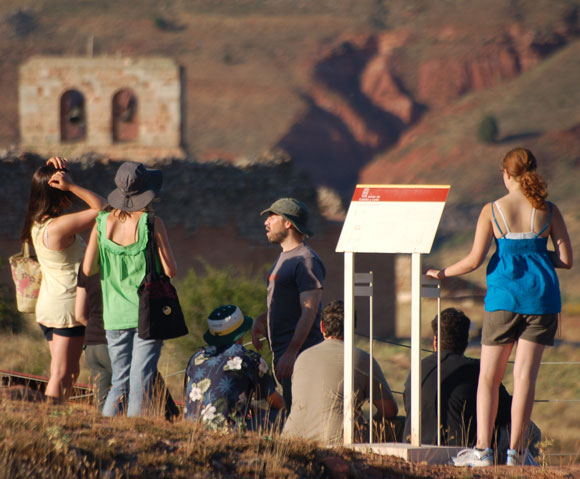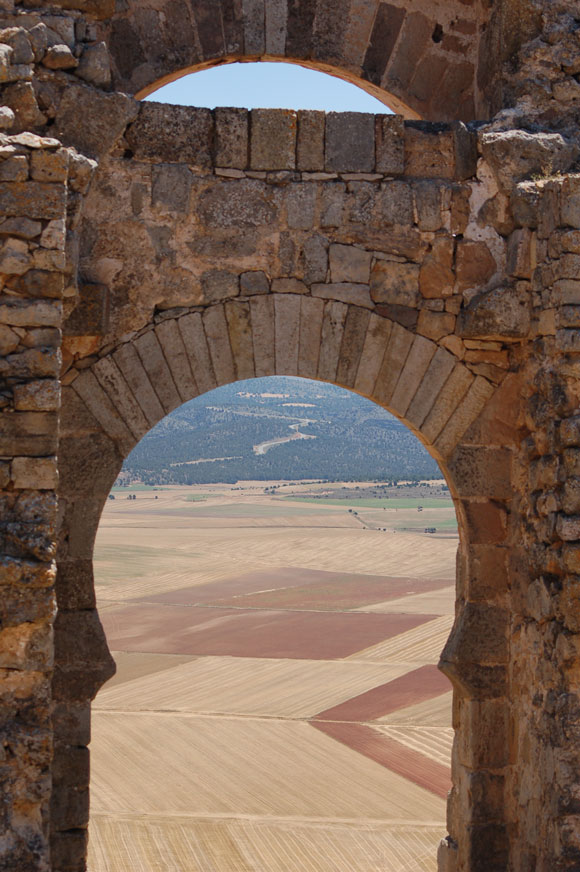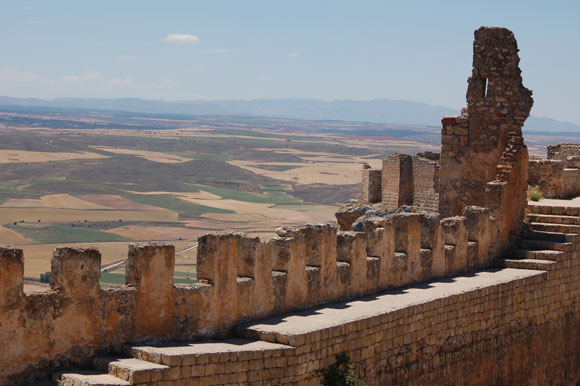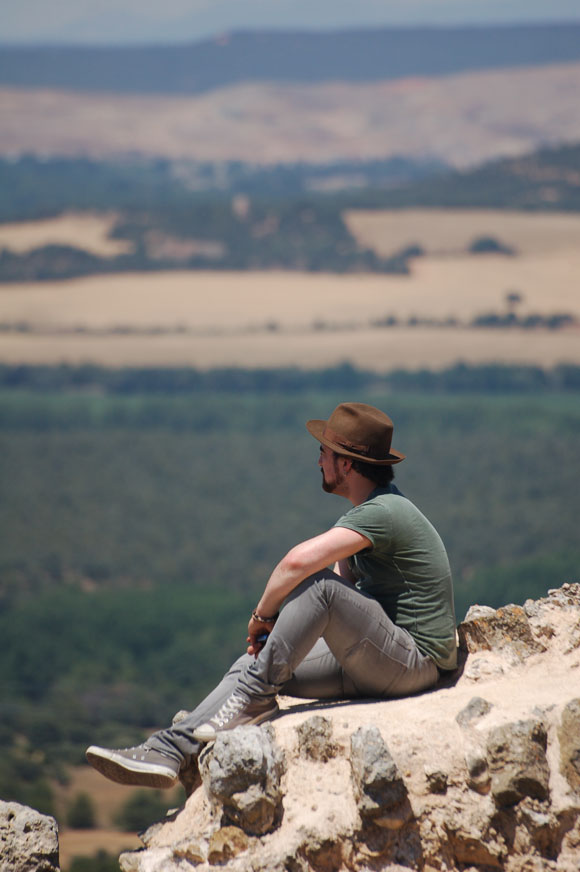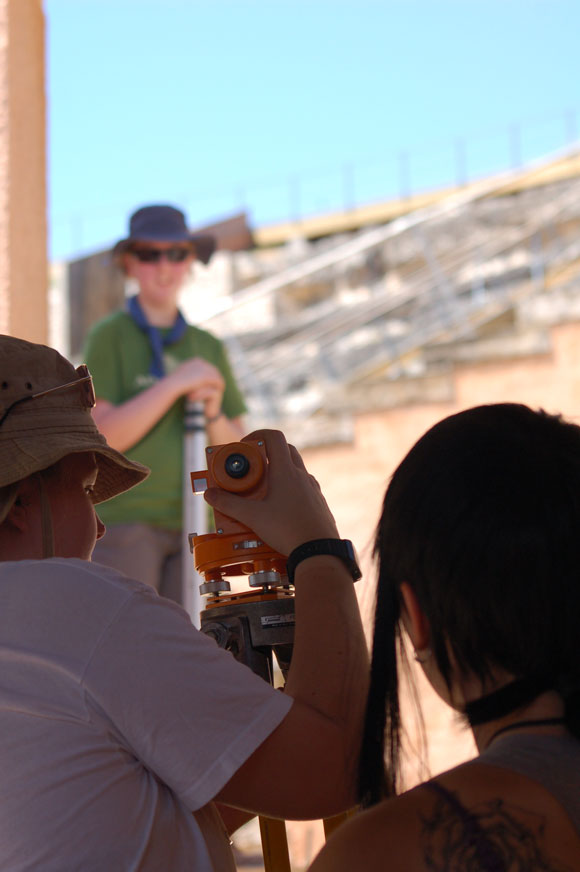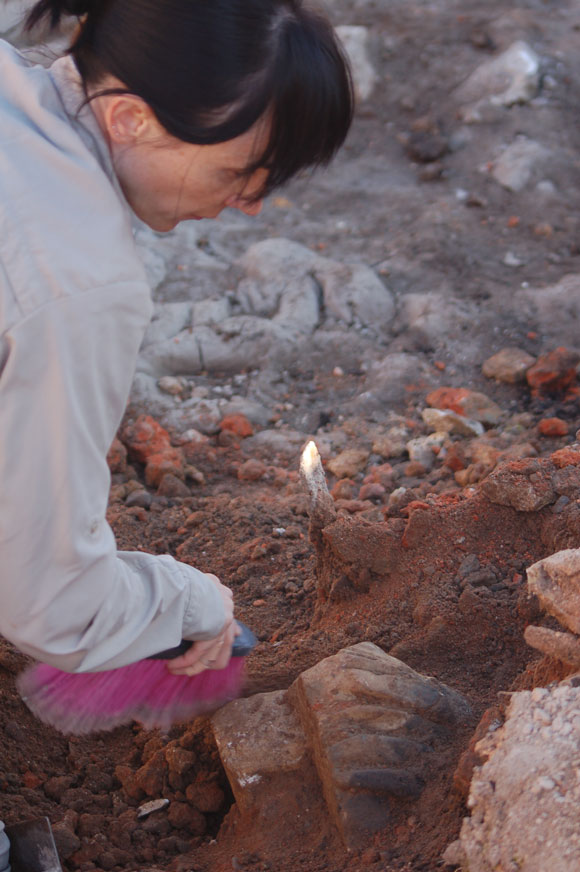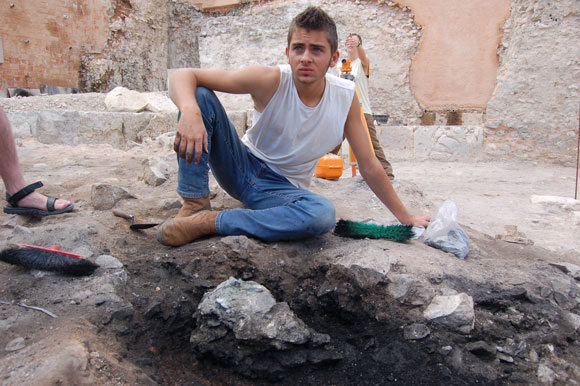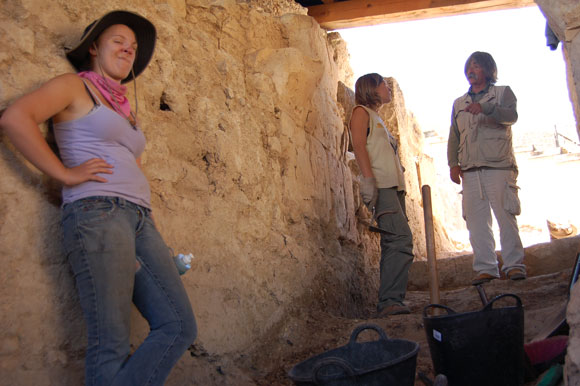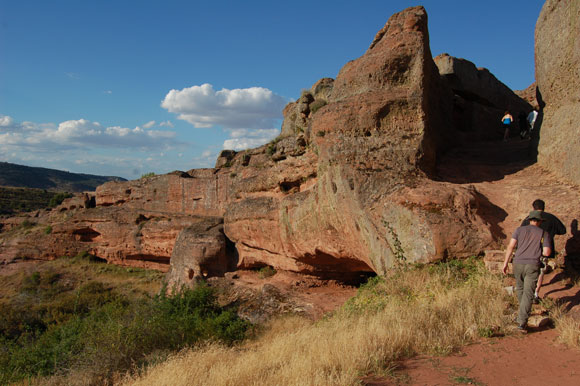
Last weekend we visited Tiermes, another abandoned Roman city in the region. Mike and Aixa excavated here years ago and guided the rest of us through the red sandstone cliffs and foundations of the ancient city.
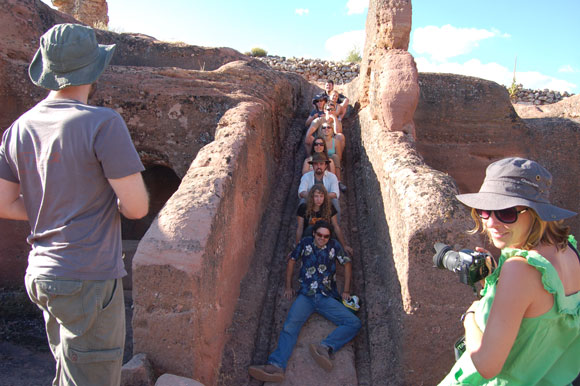
There are remnants of old roads, irrigation tunnels, and an amphitheatre.
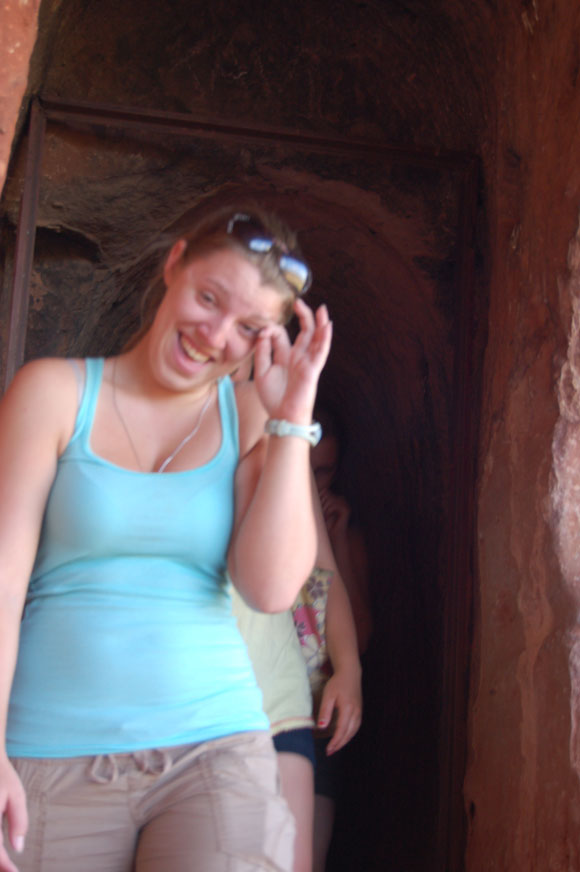
Mike told ghost stories in the tunnel, with predictable reactions.
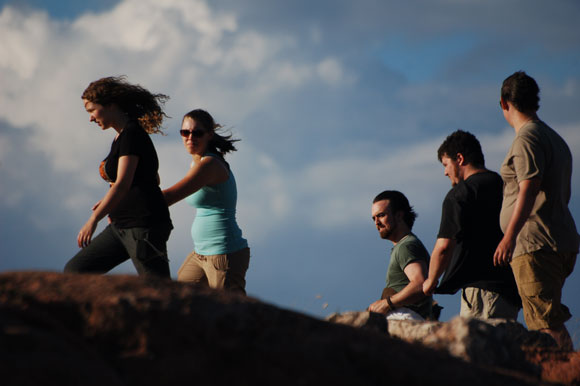
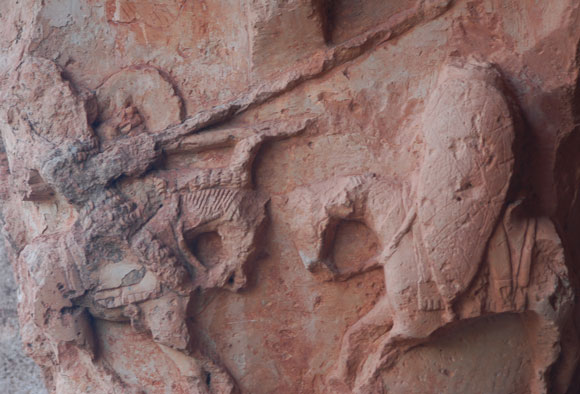
There’s also a small Romanesque chapel on the site, with this capital which appears to depict a jousting match. Guess who won?
After touring the site, we took part in the full moon festival hosted by Manolo at the Venta Tiermes, togas and all. Thanks to Patricia from Soria who later sent me this photo of one of my jumps across the bonfire.


